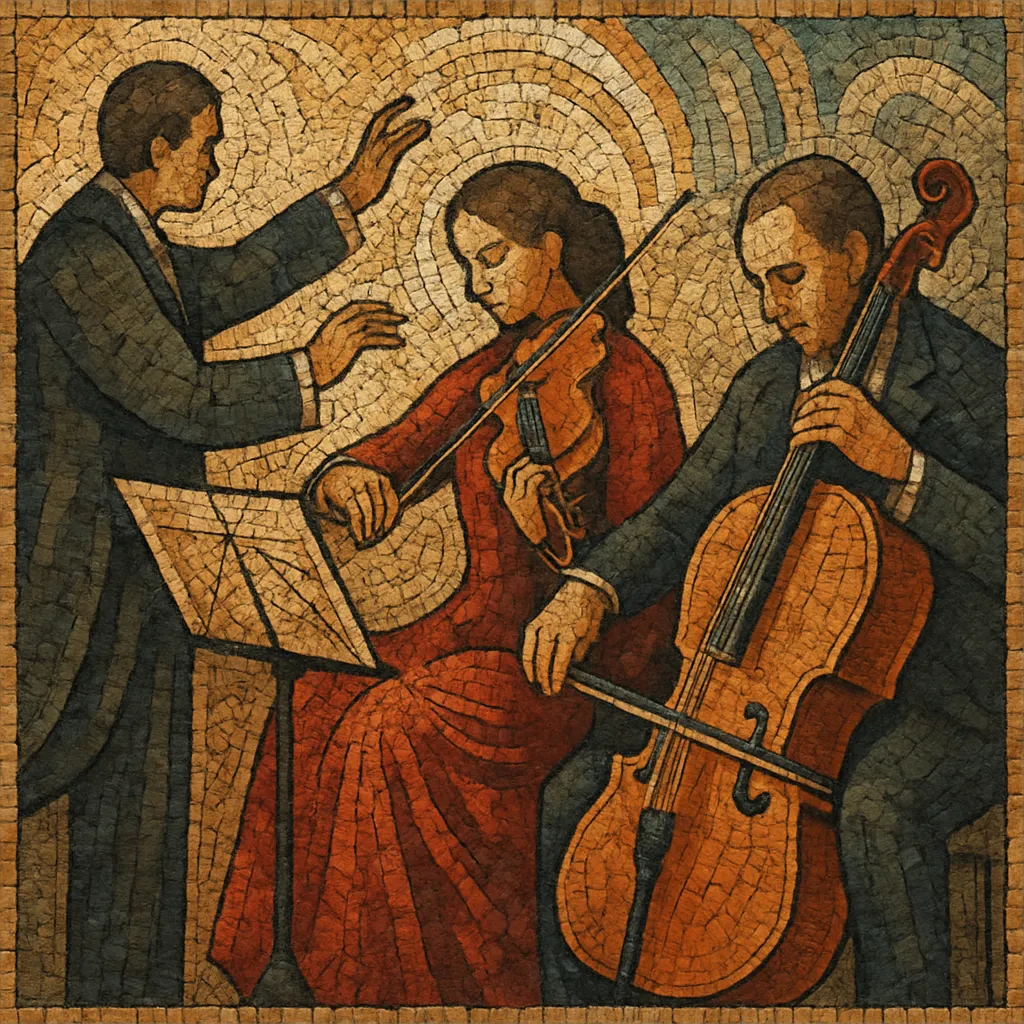A concerto is a large-scale composition that sets one or more solo instruments in dynamic dialogue with an orchestra. Its core idea is contrast—between soloist and tutti—and the dramatic negotiation of power, color, and thematic responsibility.
While Baroque concertos often relied on ritornello form, the Classical era standardized a three-movement plan (fast–slow–fast) with sonata principles in the opening movement. The Romantic period emphasized virtuosity and expressive foregrounding of the soloist, and the 20th–21st centuries broadened the palette with new instruments, harmonies, and formats. Across eras, the concerto remains a showcase for instrumental character, technical brilliance, and the art of orchestral conversation.
The term “concerto” emerged in Italy, where composers explored the idea of contrasting forces (concertare). In Bologna and Rome, figures like Giuseppe Torelli and Arcangelo Corelli shaped the instrumental concerto out of ensemble traditions and forms such as the canzona and sonata. Early concertos typically featured a concertino group set against a ripieno ensemble, laying foundations for both concerto grosso and solo concerto practices.
Antonio Vivaldi codified the three-movement fast–slow–fast layout and the use of ritornello form, crystallizing the solo concerto model for violin and other instruments. Johann Sebastian Bach absorbed and transformed these ideas in works such as the Brandenburg Concertos and keyboard concertos, cultivating the interplay of thematic returns and brilliant solo episodes. Improvised cadenzas near the end of first movements became a hallmark of the genre.
In the Classical period, the concerto absorbed sonata-allegro principles. Wolfgang Amadeus Mozart refined the conversational balance between soloist and orchestra—especially in his piano and violin concertos—while clarifying orchestral roles and motivic integration. Ludwig van Beethoven expanded scale and expressive range, giving the orchestra symphonic weight and setting a trajectory for bigger, more integrated concertos.
The 19th century elevated the soloist as hero. Composers like Felix Mendelssohn, Johannes Brahms, Frédéric Chopin, Franz Liszt, and Pyotr Ilyich Tchaikovsky wrote concertos that magnified technical brilliance and individual expression. Cadenzas were increasingly written out by composers, and instrument-making advances (e.g., piano, violin) enabled greater projection and coloristic possibility.
The concerto form proved remarkably adaptable. Béla Bartók, Sergei Prokofiev, Dmitri Shostakovich, and Igor Stravinsky reimagined tonality, rhythm, and orchestral texture; Bartók’s “Concerto for Orchestra” rebalanced the traditional soloist–ensemble hierarchy by concertizing the entire orchestra. Contemporary composers continue to expand the medium with unconventional solo instruments, extended techniques, electronics, and bespoke cadenzas, while maintaining the concerto’s essential ethos of contrast and dialogue.
Choose a solo instrument (or small group) that inspires distinctive color and technique. Decide how the soloist will converse with the orchestra—cooperative, competitive, or transformational—and plan pivotal moments (entries, climaxes, cadenza) that articulate that drama.
A common outline is three movements: fast–slow–fast. For Movement I, consider a hybrid sonata–ritornello design: orchestral exposition (tutti), solo exposition, development, recapitulation, cadenza, and coda. Movement II privileges cantabile writing and transparent orchestration. Movement III favors momentum and clarity—rondo or sonata-rondo forms work well.
Craft strong, contrasting themes that can survive transformation in solo and orchestral contexts. Use harmonic plans that support large-scale tension release (e.g., dominant trajectories, modal mixture, or expanded tonal centers in modern idioms). Reserve striking modulations and color chords for major structural junctures.
Score the orchestra to frame the soloist: thin textures under soft solo passages; fuller tuttis for structural pillars. Double lines judiciously, avoid masking the solo register, and reserve brass/percussion for rhetorical emphasis. Write idiomatically for the solo instrument—articulation, register, and technique should showcase its personality.
Vary accompanimental figures (arp-eggio, ostinato, tremolo, pizzicato) to support pacing without overpowering the soloist. Employ metric shifts or syncopations for modern character, ensuring the orchestra provides rhythmic clarity when the solo writing intensifies.
Place a cadenza near the end of the first movement (and optionally the last). It should develop core motives, escalate technical demands, and lead convincingly to the final tutti. If improvisation is desired, supply a framework; otherwise, write a fully notated cadenza that reflects the movement’s narrative.
Mark dynamics and cues that facilitate ensemble alignment in solo–tutti transitions. Provide clear tempo relationships between sections and ensure the conductor can balance spotlight and support throughout.


